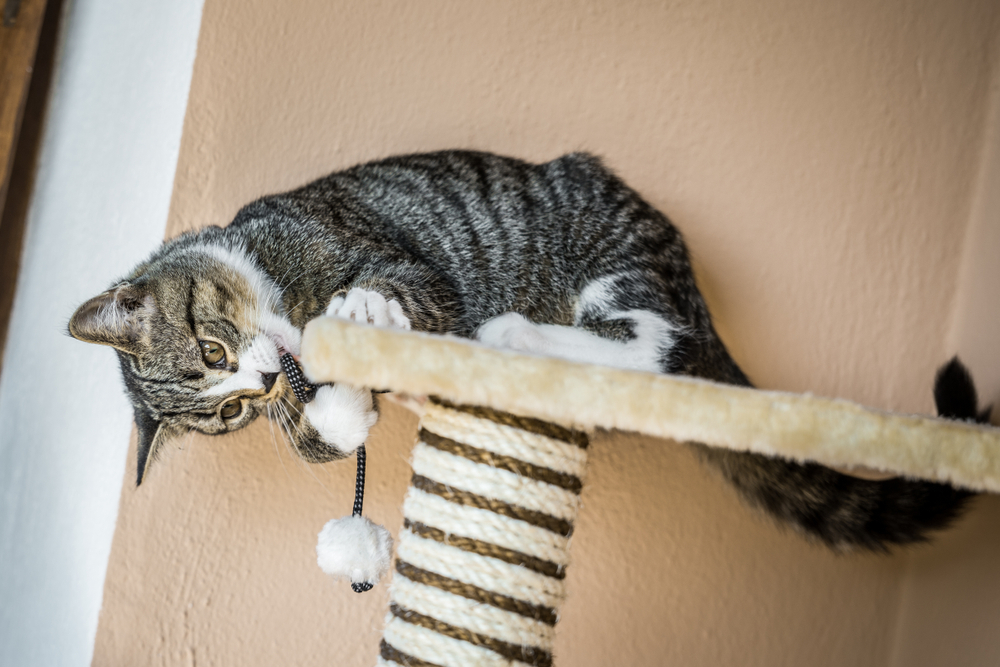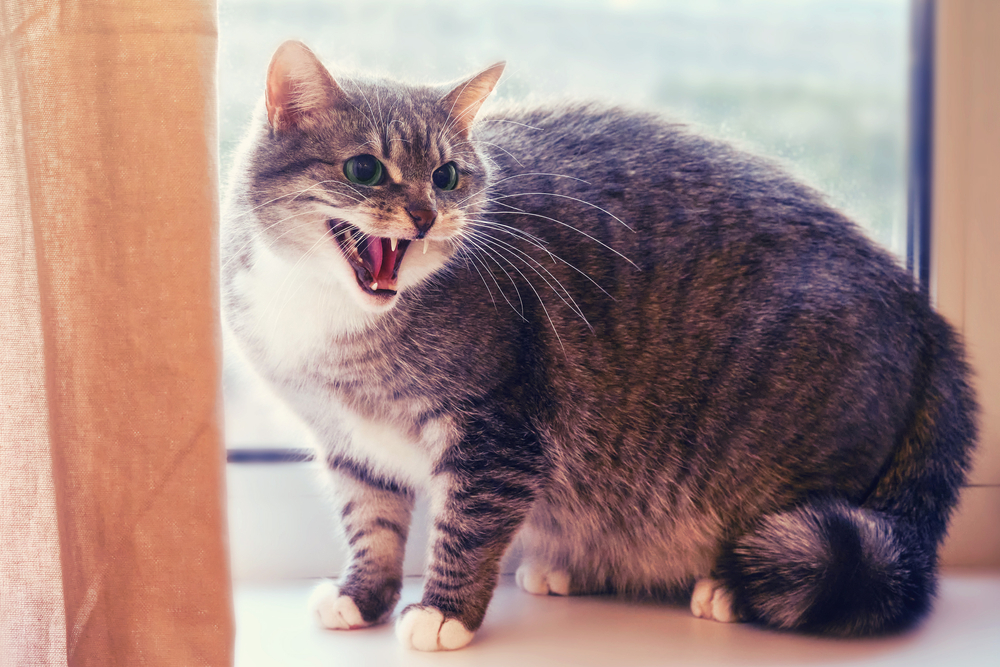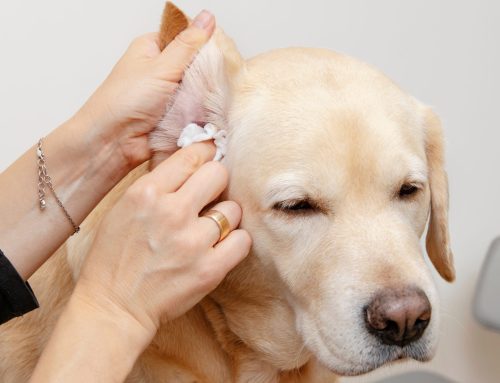Cats are both predator and prey animals, meaning they constantly have to remain vigilant, potentially making them prone to stress. Our Village Veterinary Hospital team knows how problematic stress can be for your cat, and we want to provide answers to your frequently asked questions about feline stress.
Question: What causes stress in cats?
Answer: Many situations can lead to feline stress; however, issues that cause a significant problem for one cat may not even bother another. Potentially stressful scenarios that may be stressful for cats include:
- Disruptions in routine. For example, after a long summer with your children at home, school starts and your daily schedule changes abruptly. Or, after working from home during COVID, you must return to the office and leave your cat alone during the day.
- You have multiple cats that do not get along.
- You move to a new home.
- You have a baby.
- Your neighbors are renovating their home, and workers are causing unusual traffic and noise.
- A stray cat sits outside the window near your cat’s favorite perch.
- You host a party and invite all your friends and family.
- You adopt a new pet.
- You take your typically house-bound cat to the veterinarian.
- Your neighbors have a large fireworks display.
- A thunderstorm rolls through your area.
- Your cat develops a health condition such as chronic kidney disease or arthritis.
Question: Why is stress concerning for cats?
Answer: As with humans, stress takes an emotional and mental toll on cats and can result in bigger issues, such as:
- Health problems — Stress has been linked to health conditions such as urinary changes associated with feline idiopathic cystitis, gastrointestinal upset, and dermatological conditions.
- Behavioral problems — Stressed cats are more likely to exhibit unwanted behaviors such as urinating and/or defecating outside the litter box and scratching furniture.
Question: How do I know if my cat is stressed?
Answer: Signs your cat may be stressed include:
- Hiding — Hiding can be a normal behavior for cats, but if your feline friend is hiding more than usual, they may be stressed.
- Eliminating inappropriately — Stressed cats often stop using the litter box or choose other locations to urinate or defecate.
- Eating changes — Stressed cats may have a decreased appetite, or they may want to overeat, begging for food all day.
- Grooming issues — Cats are typically meticulous groomers, but when stressed, many overgroom, which may result in hair loss or skin wounds.
- Exhibiting destructive behavior — If your cat is stressed, they may scratch your furniture or chew on cords.
- Vocalizing — Some stressed cats vocalize more, especially when left alone or when their primary caregiver leaves.
- Showing aggression — Stressed cats may exhibit uncharacteristic aggression toward their owners or other household pets.
Question: What can I do to relieve my cat’s stress?

Answer: If possible, identify the cause of your cat’s stress and address the situation. Other general tips include:
- Seeking veterinary attention — The first step should be consulting our veterinary team to ensure a medical issue isn’t causing your cat’s stress.
- Providing appropriate resources — If you have multiple cats, ensure every cat has their own food and water bowls, hiding spot, elevated resting area, scratching post, and toys. In addition, provide one litter box for each cat plus one extra.
- Ensuring your cat is properly enriched — Cats need physical and mental stimulation to prevent boredom and reduce stress. Tips include:
- Playing with your cat for at least 10 minutes twice a day.
- Providing a window perch where your cat can watch birds and small mammals in your yard.
- Feeding your cat using a food puzzle toy.
- Switching out your cat’s toys every two weeks.
- Making introductions appropriately — If you adopt a new pet, take the appropriate steps to make the introduction to your current pets successful. Tips include:
- Sequestering the new pet in a designated room with the resources they need.
- Letting your new pet and your cat meet through the door.
- Exchanging your cat’s bedding with the new pet to let them get accustomed to the scent.
- Feeding your cat and new pet on either side of the closed door.
- Letting your cat and new pet meet through a barrier where they can see each other, but cannot physically interact.
- As long as neither pet exhibits aggression through this process, let them meet and interact, monitoring the exchange until you are sure they will get along.
- Creating a cat safe zone — Ensure your cat has areas where they can hide throughout your home, and if you host a party, consider sequestering them in a designated area where they won’t be disturbed by the activity and noise.
- Ensuring the litter box situation is cat-approved — Cats can be picky about their litter box preferences. Tips include:
- Cleaning the litter box regularly, scooping at least twice a day and changing the litter once a week.
- Placing the litter box in a quiet area where your cat won’t be startled.
- Ensuring the box is large enough for your cat to comfortably turn around.
- Using unscented, clumping litter. There are many options and it may take you several tries to find the right one for your cat.
- Feeding strategically — If you have multiple cats that do not share their food well, feed them in different rooms so they do not interact while they eat.
If you are worried about your cat’s stress level, contact our Village Veterinary Hospital team so we can rule out a health issue and help find an effective solution.



















Leave A Comment